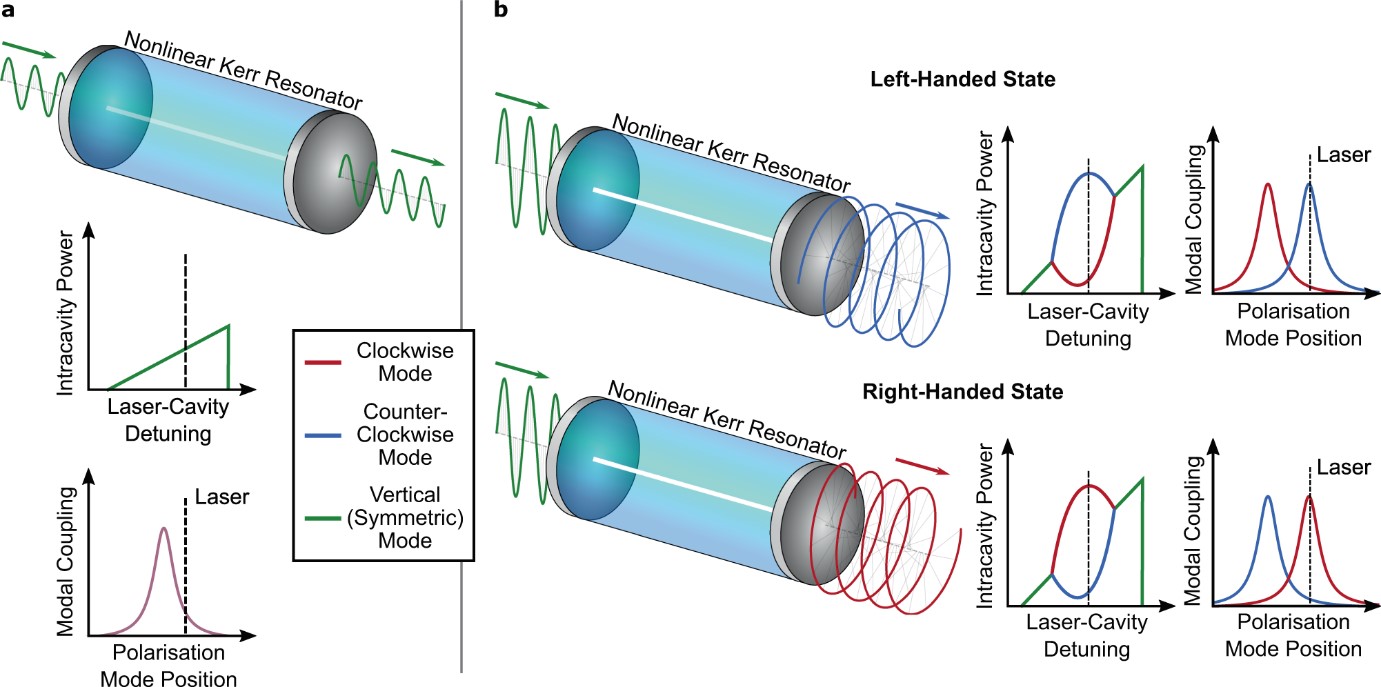A Kerr Polarisation Controller
In a collaboration with the Max Planck Institute for the Science of Light in Germany, Imperial College in England, the University of Neuchâtel in Switzerland and DESY in Germany, Gian-Luca Oppo and Lewis Hill of the Department of Physics at Strathclyde helped to demonstrate the manipulation of light polarisation of a continuous laser wave in a special glass fibre with mirrors attached at both ends. The collaboration published the discovery in the journal Nature Communications (A Kerr polarization controller, Nat. Commun. 13, 398 (2022)).
In this new device it is possible to convert the polarisation of an input light wave oscillating in one plane into a wave which oscillates in a circular way - which resembles the shape of a corkscrew. This effect was achieved by sending infrared laser light into a two-meter-long glass fibre made of silica and using the Kerr effect discovered by Scottish physicist John Kerr in Glasgow in 1875.
The light in the fibre is trapped between two nearly perfect mirrors and changes its behaviour above a certain threshold of the input power when the polarisation vector starts to circle either clockwise or anti-clockwise. In this way it is possible to control the direction of rotation of the polarisation vector by changing the power of the input light.
In the future one could arrange many of these devices onto photonic chips in order to generate and control complex polarisation states for telecommunication systems or optical computing. In addition, these devices can also work as highly sensitive sensors and improve the performance for example of optical neural networks used in artificial intelligence applications or of systems for quantum information processing.

March 2022